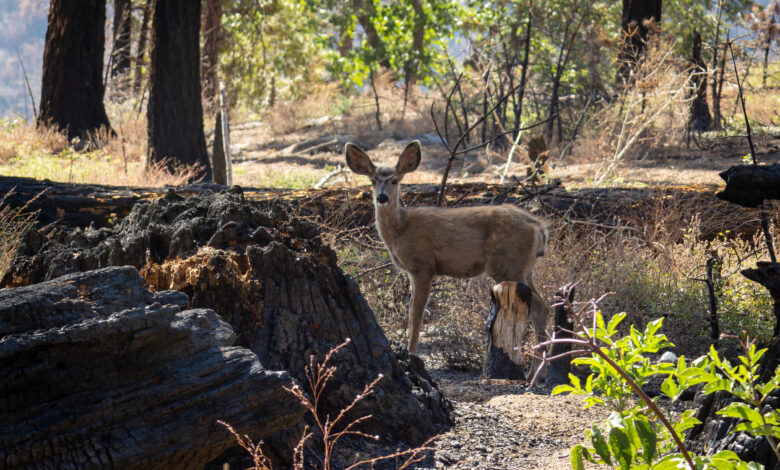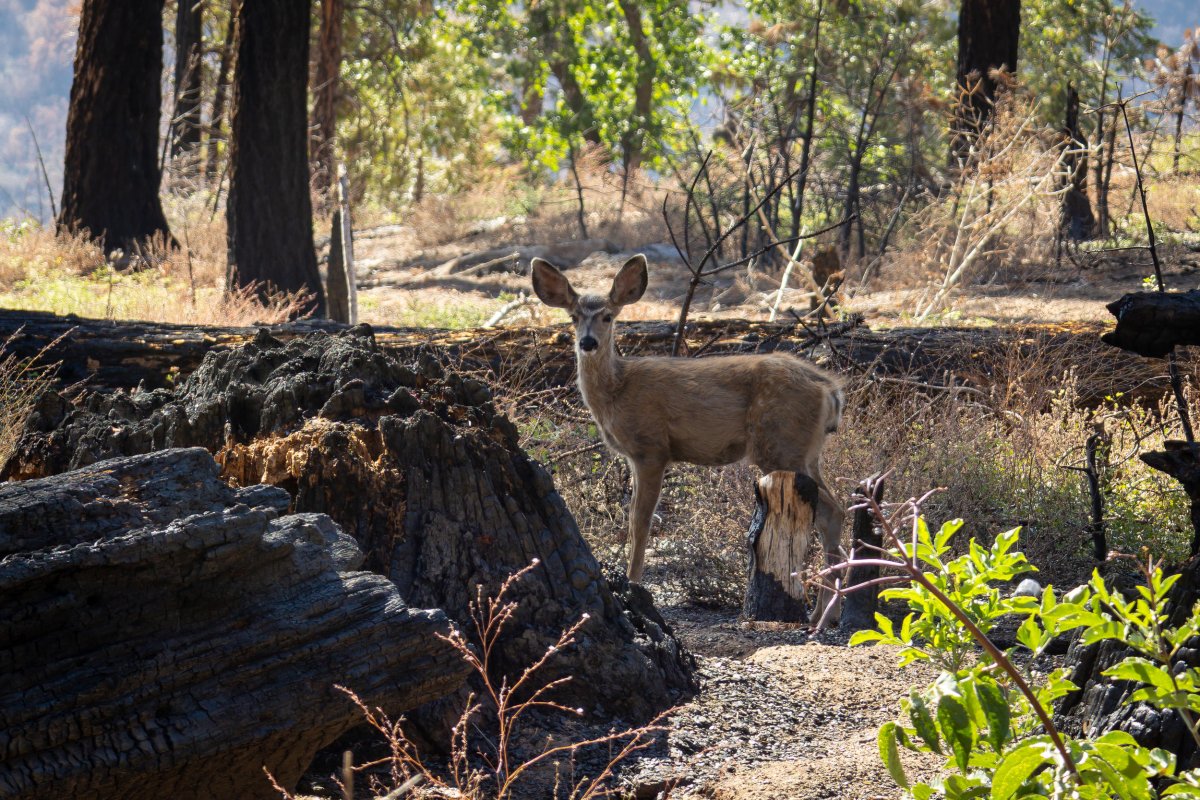
California Fires: What Happens to Wildlife and Animals During Wildfires
Several wildfires have ravaged parts of California, mostly to the north and west of Los Angeles.
California Governor Gavin Newsom has declared a state of emergency, with much of Southern California facing “life-threatening” winds and extreme fire weather through Thursday, the governor’s office said in a statement Tuesday.
“This is a highly dangerous windstorm that’s creating extreme fire risk—and we’re not out of the woods…if you’re in Southern California, please pay attention to weather reports and follow any guidance from emergency officials,” Newsom warned.
Residents have been ordered to flee their homes, with evacuation orders issued in several parts of the state. But what happens to animals during wildfires?
How Are Wildlife Kept Safe During Wildfires?
Animals try their best to move out of the direct path of the fire while remaining close to home if they cannot find refuge during wildfires, Stephanie Eyes, a senior wildlife biologist for the U.S. Fish and Wildlife Service’s (FWS) Sacramento Fish and Wildlife Office, noted in an October 2022 article.
She explained that “wildlife will move around their home area, avoiding the smoke and actively burning areas until it’s safe to return.” Some animals, such as frogs and rodents, don’t travel far and seek cover instead in underground burrows where they can be protected from the heat.
Frogs and fish may swim to the deepest parts of the waters they inhabit. When a fire is burning just a few feet high, birds and any animals that can climb may head up towards the branches and tree canopy to avoid the flames. Fishers might crawl into a tree cavity, while deer, bears and other animals will move around the forest until the fire dies down, according to Eyes.
“Wildlife is incredibly resilient,” Eyes said, noting that “California has a long history with wildfire, and many species adapted to endure it.”
“When I was working in Yosemite [the national park], there was a female California spotted owl who weathered several wildfires. We were always concerned about her, but she would still be there, year-after-year,” the biologist recalled.
However, during a “high-severity fire,” which burns across a large forest landscape, moving fast and climbing through the tree canopy, finding refuge can be challenging for animals in the wild.
“Wildlife have adapted to deal with smaller fires, and unfortunately, sometimes they can’t escape these recent, big fires,” Eyes said.
What About Pets and Other Animals?
Pet animals are typically evacuated along with their owners and can find refuge in shelters.
The Westwood Recreation Center is currently open for evacuees and small animals, serving as a shelter where they can remain overnight, while the Los Angeles Equestrian Center is open for the evacuation of large animals, the Los Angeles Fire Department said on Tuesday.
The California Animal Response Emergency Support (CARES) unit of the California Department of Food and Agriculture (CDFA) has issued several guidelines for animals, including pets, to prepare for emergencies and disasters such as fires.
Owners are advised to have a “pet evacuation kit” ready on hand, containing at least a week’s supply of food and water and other important items, such as health documents and medication.
Depending on the scale of the fire, some farm animals can be relocated to a safer area of the farm, while others must be located off-site to a safer location that can provide feed, water and shelter, according to the National Dairy Farm Program, as noted under the Farm Emergency Action Plan Guide at the CDFA website.
“Animal owners, and especially owners of horses and livestock, must rely on themselves to take care of their animals in a disaster,” wrote the UC Davis Veterinary Medicine Center for Equine Health.
Owners are advised to “designate and maintain a shelter-in-place area for animals that cannot be evacuated,” the center advises.
See the CDFA website for more information on how to keep pets and other animals safe during fires and other emergencies.
Newsweek has contacted the Los Angeles County Fire Department, the Los Angeles County Parks & Recreation Department and the Los Angeles Fire Safe Council for comment.

iStock / Getty Images Plus
Source link



